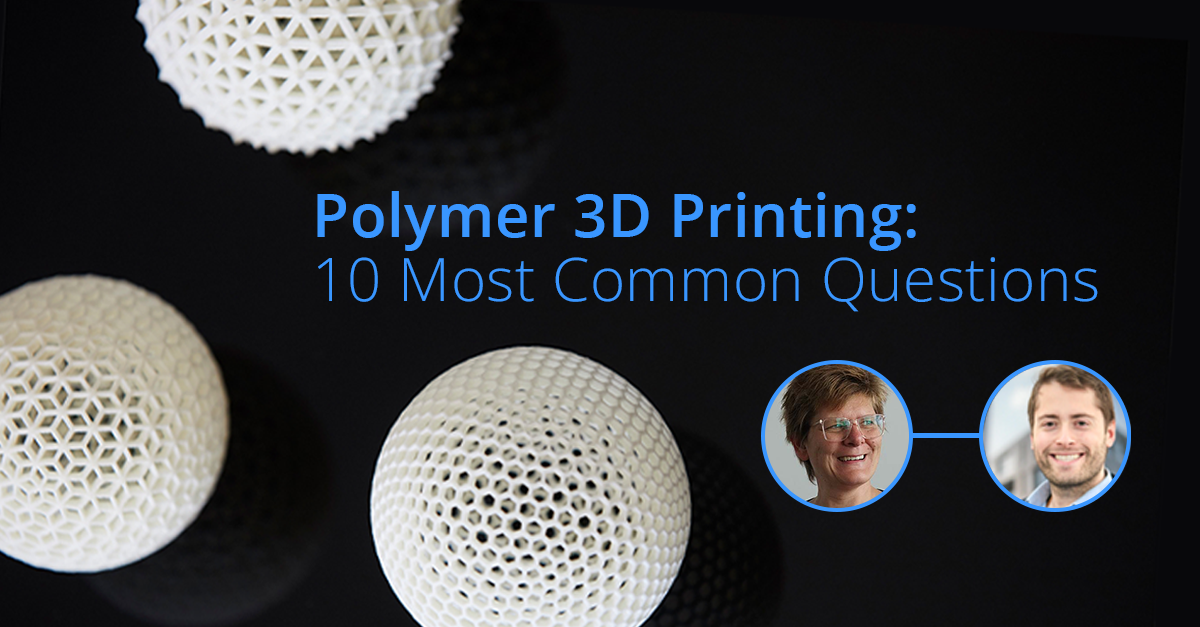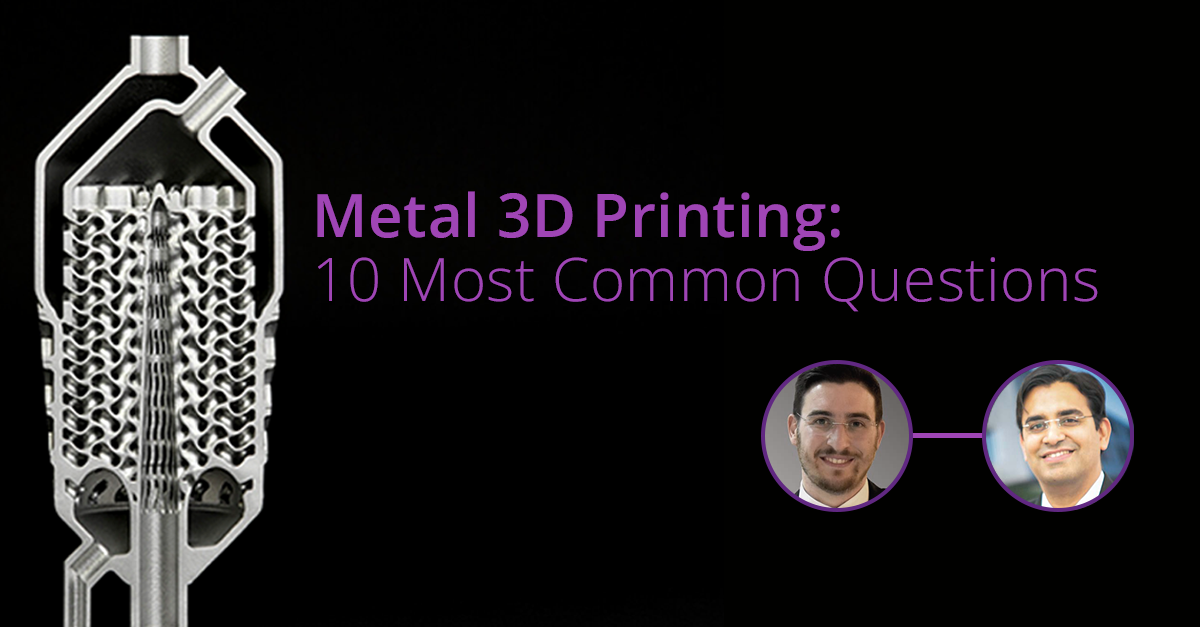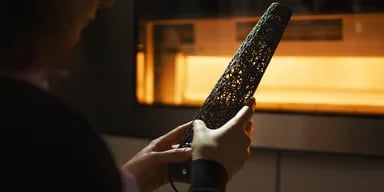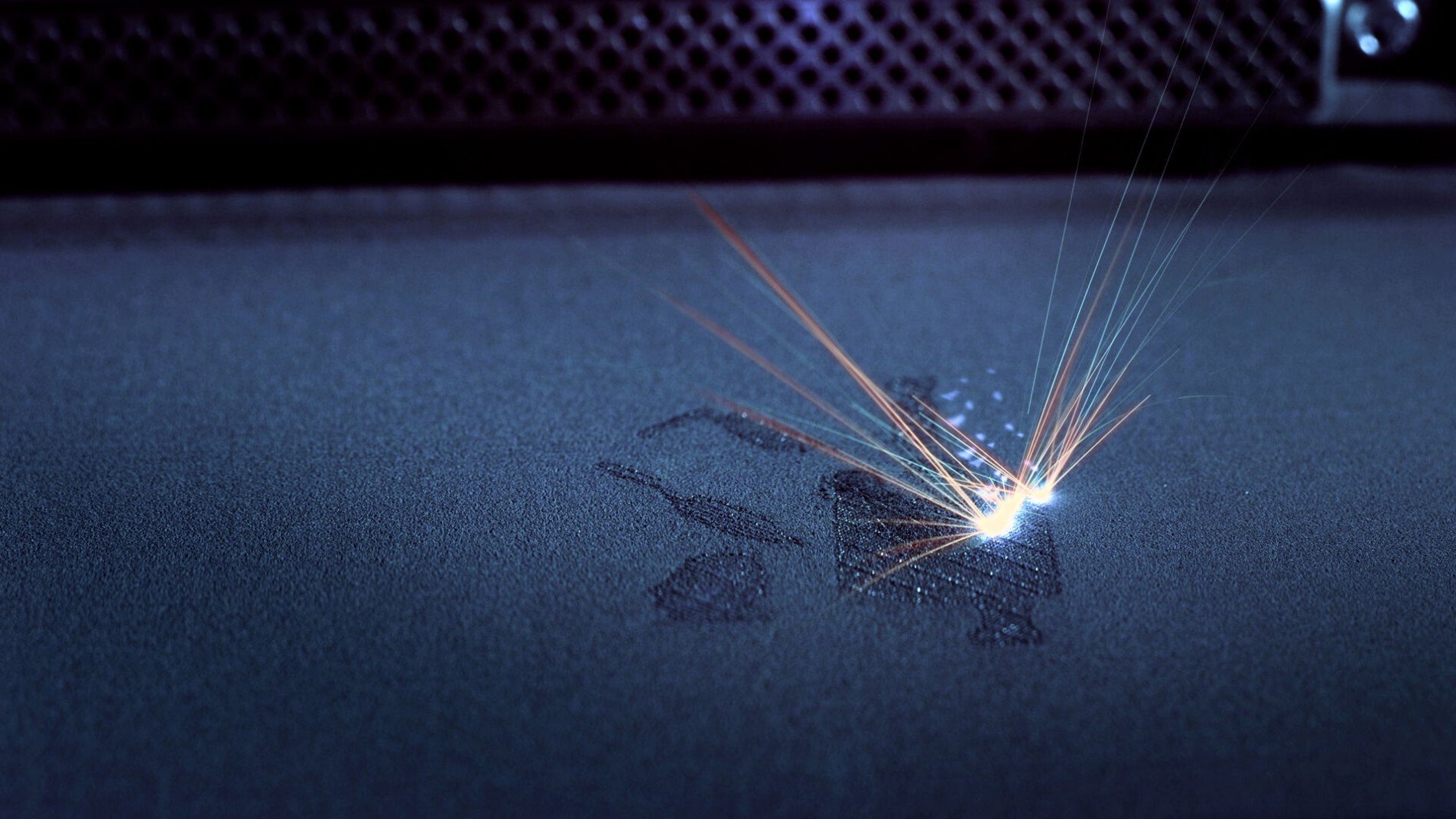Industrial 3D Printing
Most Common Questions
Most Common Questions
A Webinar Series
Discover the Benefits of Industrial 3D Printing
Getting started with industrial 3D printing can seem intimidating - but it doesn't have to be. With 30+ years of additive manufacturing (AM) expertise, EOS has enabled organizations at every level to successfully integrate industrial 3D printing into their production process. Regardless of your team's 3D printing experience, we are here to answer your questions and provide expert insight from beginning to end.
Attend our webinar series, Industrial 3D Printing: Most Common Questions to hear from EOS experts as they discuss the basics of AM technology, the benefits for both metal and polymer part production, and the answers to common 3D printing questions we've all had when beginning our AM journey. Register today to learn more about the benefits of industrial 3D printing and the capabilities you may be missing out on with traditional manufacturing methods.
Industrial 3D Printing
10 Basics in 20 Minutes
Companies across a variety of industries are already leveraging the unique benefits of additive manufacturing (AM) to improve product development and streamline manufacturing. Whether you’re looking to develop a comprehensive strategy or just want to experiment with metal and/or polymer 3D printing, you need to start with the basics. In this webinar series we will discuss:
In this webinar, we will discuss:
- What is 3D printing / additive manufacturing, and how does it work?
- What are the main 3D printing technologies and how do they differ?
- What industries are using AM and what applications are they printing?
- How does 3D printing compare with other manufacturing technologies?
- What are the advantages and benefits?
- What are the main challenges and limitations?
Speakers: Fabian Alefeld, Senior Manager – Academy & Consulting, EOS North America + Patrick Schrade, Head of Application Engineering and Additive Minds Academy, EOS
Polymer 3D Printing
10 Most Common Questions
New capabilities are helping AM increase its foothold, not only with prototyping, but also with end-use parts. This is especially true with polymers, where several technologies and a wide variety of materials are now available. But hardware is only part of the equation. To deliver maximum value, comprehensive solutions also require software, processes and expertise.
In this webinar, we will discuss:
- What are the different technologies, and how do they differ?
- What materials are available and how do they perform?
- When does it make sense to use polymer 3D printing instead of other manufacturing methods?
- What size parts can be printed, and what kind of quality can be achieved?
- Is it necessary to optimize a part’s design for AM?
- What other tools and capabilities are essential to get from start to part?
Speakers: Dr. Cary Baur, Manager of Polymer Material R&D and Applications Development + Andrea Weichselbaumer, Senior Application Specialist and Senior Training Specialist for Polymers, EOS
Metal 3D Printing
10 Most Common Questions
AM offers several benefits over traditional manufacturing technologies. Because it relies on a digital workflow, it empowers engineers with new design freedom, helping them create parts that are lighter, stronger and more functional than before. AM also enables customization and offers a speed-to-market advantage other solutions can’t match. Metal 3D printing helps companies extend those benefits to a wider range of parts, which can drastically improve the overall quality and performance of their products.
In this webinar, we will discuss:
- What are the various methods for 3D printing metals?
- What materials are available and how do they perform?
- When does it make sense to use metal 3D printing instead of other manufacturing methods?
- What size parts can be printed, and what kind of quality can be achieved?
- Is it necessary to optimize a part’s design for AM?
- How does metal 3D printing help with lightweighting?
- What other tools and capabilities are essential to get from start to part?
.png)


.png?width=1670&height=932&name=MicrosoftTeams-image%20(55).png)

